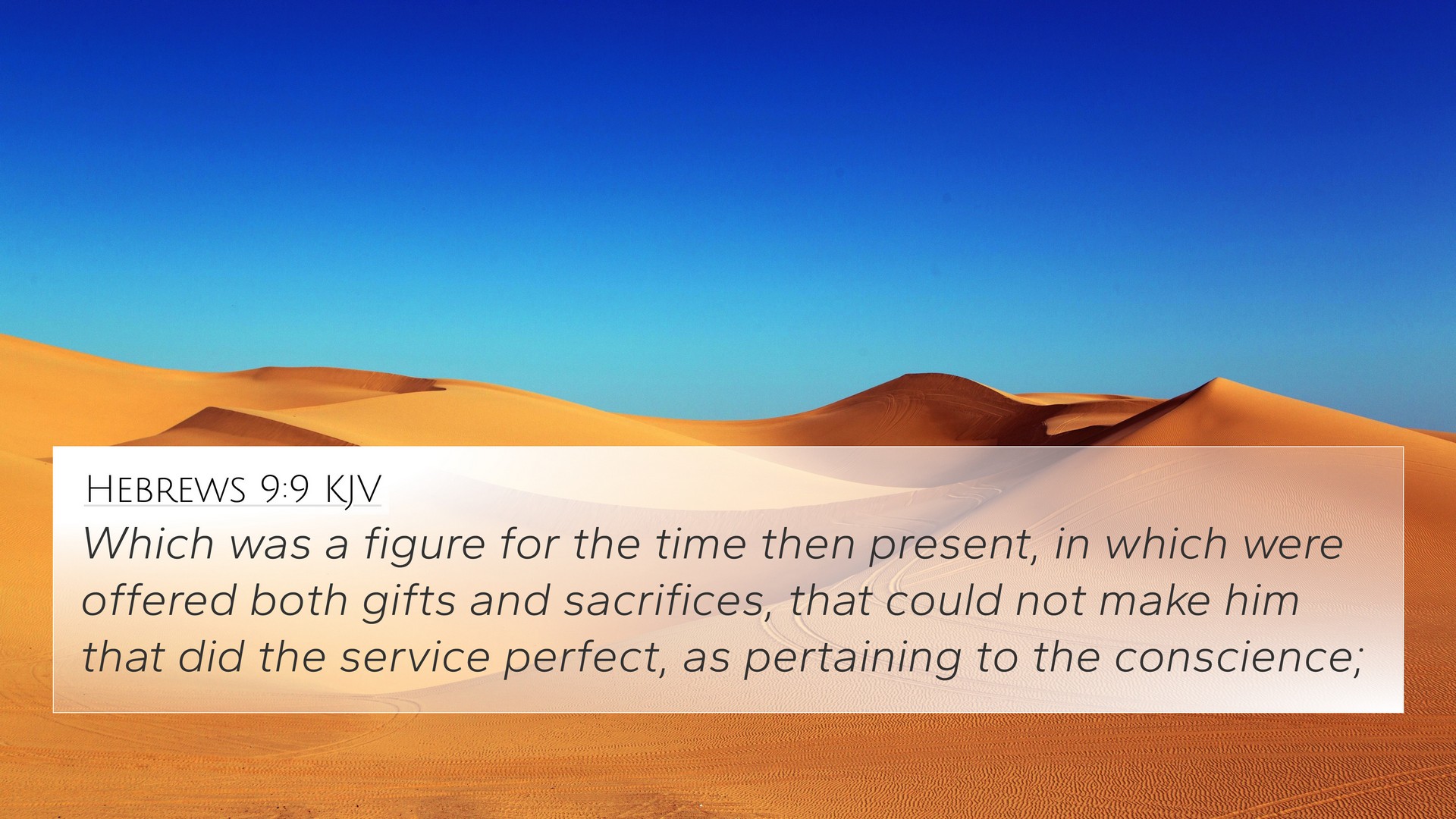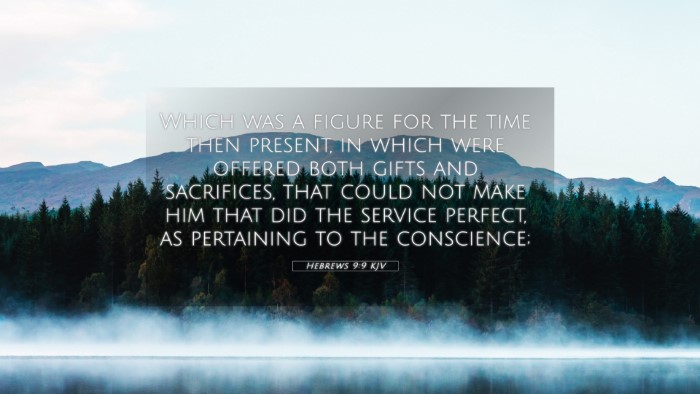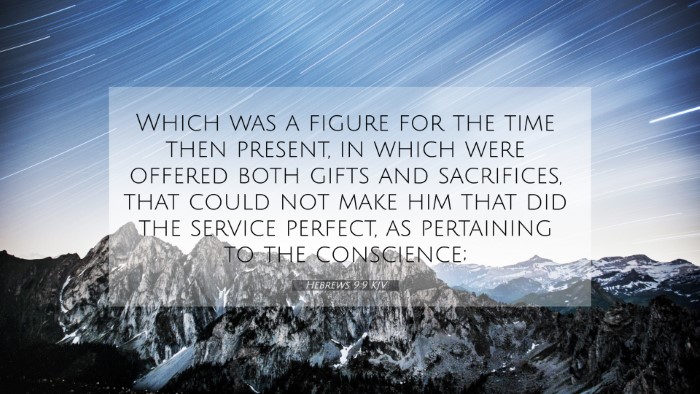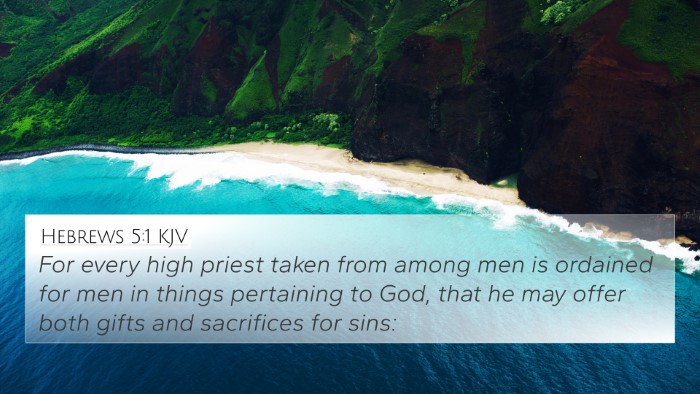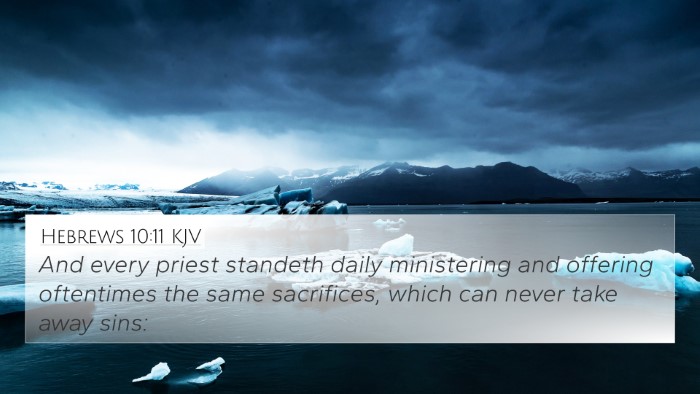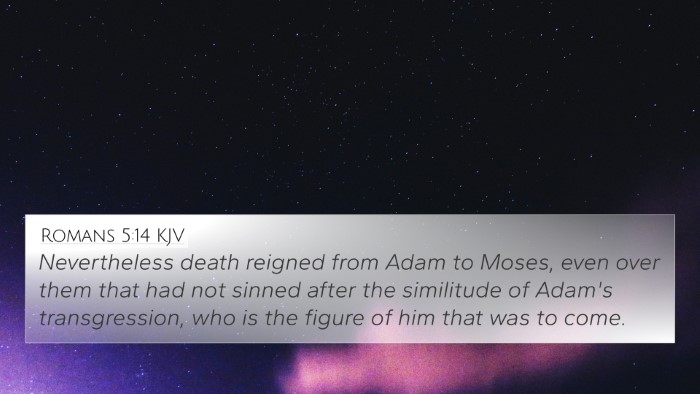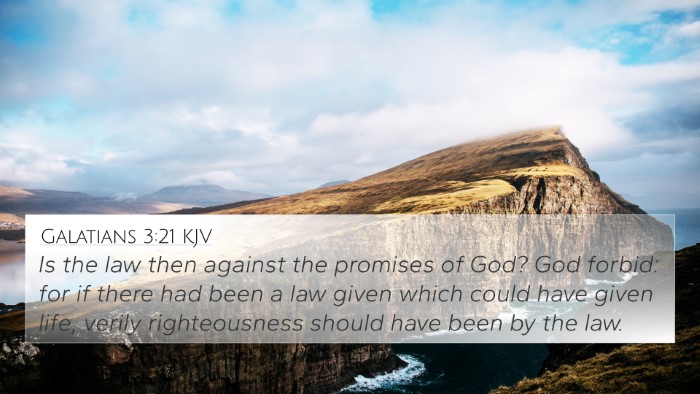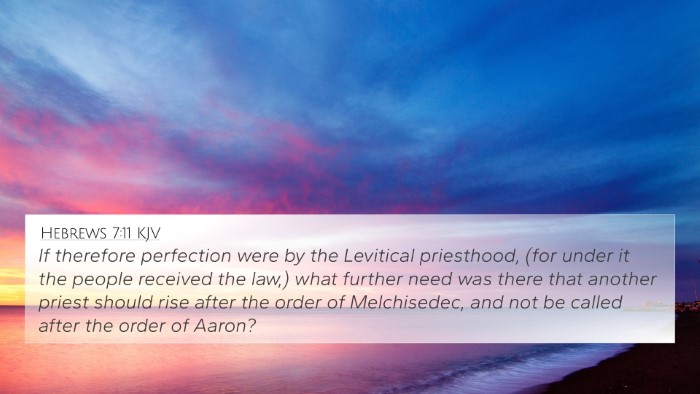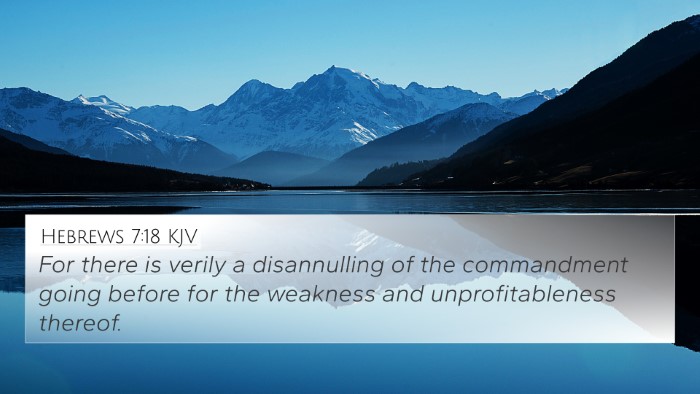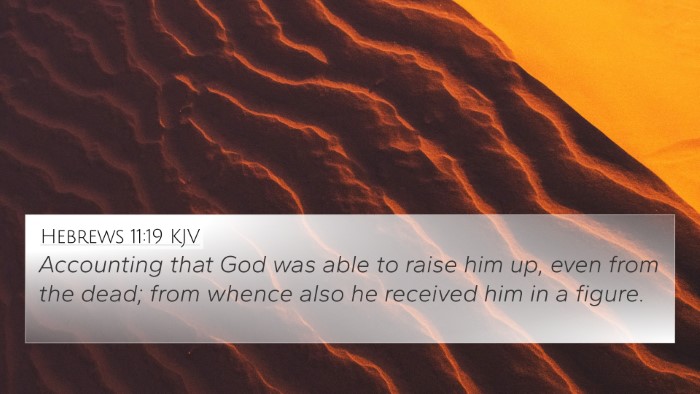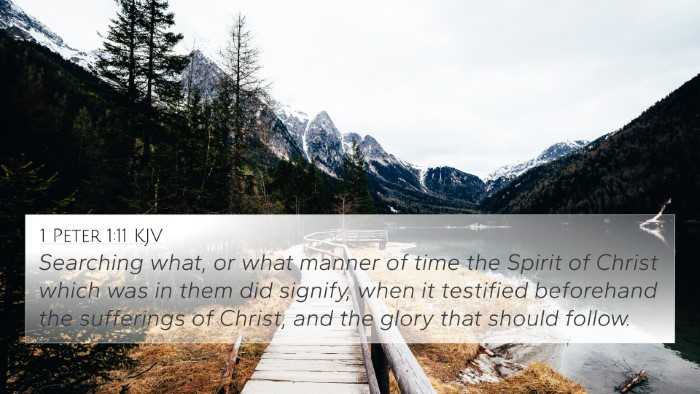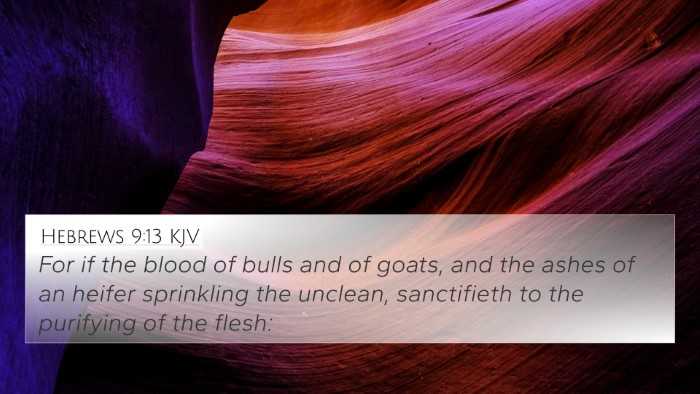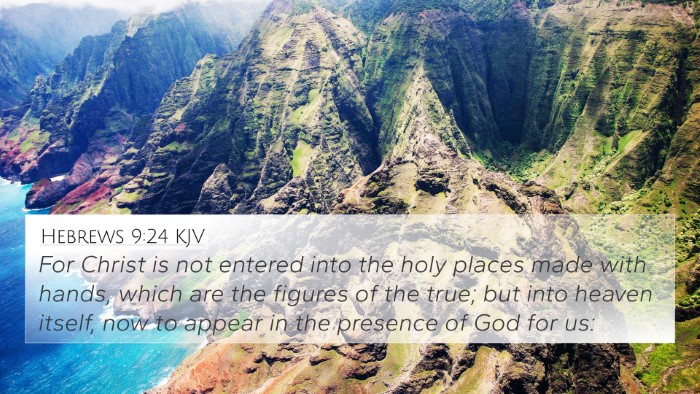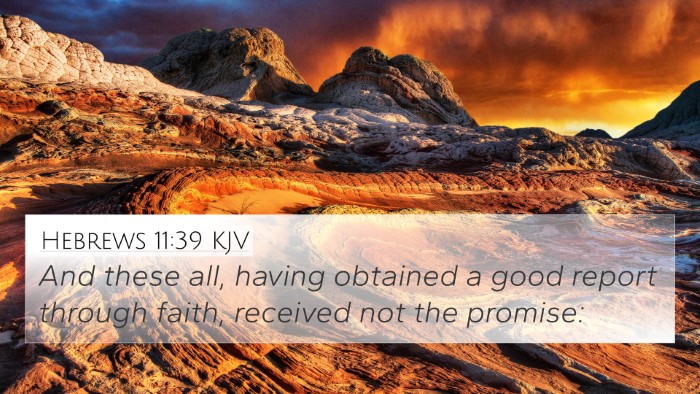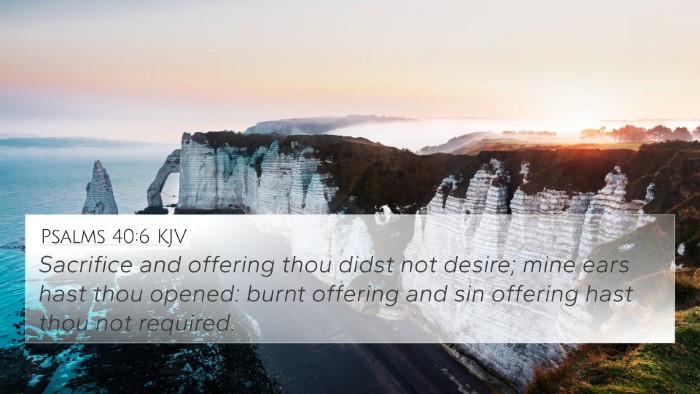Bible Verse Meaning: Hebrews 9:9
Verse Text: "Which was a figure for the time then present, in which were offered both gifts and sacrifices that could not make him that did the service perfect, as pertaining to the conscience;" (Hebrews 9:9, KJV)
Summary of Hebrews 9:9
This verse centers around the sacrificial system of the Old Testament, discussing how the rituals and offerings made by the priests served as a temporary measure and foreshadowing of something greater to come. The "figure" mentioned represents these Old Testament practices, which were ultimately insufficient for true spiritual cleansing and justification.
Insights from Public Domain Commentaries
- Matthew Henry:
Henry emphasizes that the sacrifices of the Levitical priesthood were merely shadows of more substantial realities. He points out that while the outward rituals were crucial for ceremonial purity, they lacked the power to truly cleanse the heart and conscience of sin. The offerings were a necessary part of God's law, yet they highlighted the need for a better sacrifice, leading to Christ.
- Albert Barnes:
Barnes explains that the law and its offerings served as a symbol for the time in which they were instituted. He notes that the high priests performed their duties annually, which could never reach the perfection required for a complete reconciliation with God. This verse, therefore, sets the stage for understanding Christ’s ultimate sacrifice, which fulfills and surpasses the old sacrifices.
- Adam Clarke:
Clarke asserts that the phrase "which was a figure" captures the essence of the old covenant system. The gifts and sacrifices highlight human limitations and the inability of ritual to address the deeper issue of sin. Clarke links this idea to the transformative power of the New Covenant in Christ, which offers genuine purification and access to God.
Connections to Other Bible Verses
Hebrews 9:9 has several crucial connections with other Bible verses that further illuminate its meaning:
- Hebrews 10:1: "For the law, having a shadow of good things to come, and not the very image of the things, can never with those sacrifices which they offered year by year continually make the comers thereunto perfect."
- Romans 3:20: "Therefore by the deeds of the law there shall no flesh be justified in his sight: for by the law is the knowledge of sin."
- Galatians 3:24: "Wherefore the law was our schoolmaster to bring us unto Christ, that we might be justified by faith."
- 1 Peter 1:18-19: "Forasmuch as ye know that ye were not redeemed with corruptible things, as silver and gold, from your vain conversation received by tradition from your fathers; but with the precious blood of Christ, as of a lamb without blemish and without spot."
- Hebrews 7:27: "Who needeth not daily, as those high priests, to offer up sacrifice, first for his own sins, and then for the people's: for this he did once, when he offered up himself."
- John 1:29: "The next day John seeth Jesus coming unto him, and saith, Behold the Lamb of God, which taketh away the sin of the world."
- Hebrews 9:14: "How much more shall the blood of Christ, who through the eternal Spirit offered himself without spot to God, purge your conscience from dead works to serve the living God?"
Thematic Connections and Implications
The themes explored in Hebrews 9:9 reflect broader discussions throughout Scripture about the purpose of sacrifices, the nature of sin, and the ultimate provision of God through Jesus Christ. The following areas can be observed:
- Temporary vs. Eternal: The Old Testament sacrifices were temporary, while Christ's sacrifice is eternal, providing lasting redemption.
- Preparation for Christ: The rituals served to prepare the hearts of believers to receive the true sacrifice embodied in Jesus.
- Conscience and Forgiveness: The inadequacy of the old covenant highlights the necessity of true forgiveness and internal transformation.
- Old Covenant and New Covenant: The verse contrasts the limitations of the Old Covenant with the superior provisions found in the New Covenant through Christ.
How to Utilize Cross-Referencing for Deeper Understanding
Cross-referencing Bible texts enriches one's understanding of Scripture. Here are some tools and approaches for effective study:
- Utilize a Bible concordance to locate terms and themes across different verses.
- Employ a Bible cross-reference guide to find thematic connections.
- Incorporate cross-reference Bible study methods into personal study, focusing on the relationship between verses.
- Consider chain references, where one verse leads to another, creating a web of understanding.
- Use biblical study tools that offer insights into connections between Old and New Testament narratives.
Conclusion
Hebrews 9:9 serves as a critical reminder of the limitations of the Old Covenant sacrificial system and points towards the necessity of a perfect sacrifice. The insights from various commentaries elaborate on the deeper theological implications of the verse and its connections to numerous other scriptures. For those seeking to deepen their biblical knowledge, engaging in comparative analysis and utilizing cross-referencing tools will enhance understanding and provide a richer experience of God's Word.
